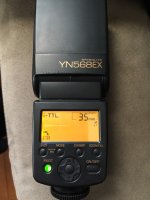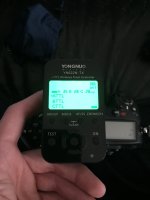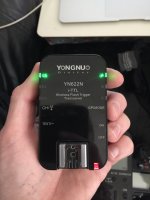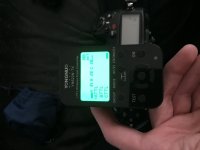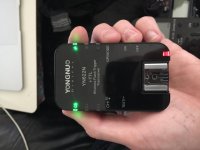Well Wayne..
It's safe to say I'm more confused than ever... I feel I want to use HSS Because I shoot low Aperture and faster shutters even in dark abandoned places, I could never imaging trying to shoot something at 1/200 or less, idc what I'm shooting it would be white, idk what is going on but I feel something isn't right, I don't think I'll learn by reading, been investigating for months and I'm a hands on guy.
Thanks for the help anyway Wayne, I appreciate it
Suit yourself, and good luck. But you really cannot demonstrate any use for a fast shutter speed with speedlight in "dark abandoned places". Not even in your own normally lighted living room (which is dim compared to outside in bright sun). You are NOT photographing that dark or dim light, you are using flash instead. Maybe if you do heroics with high ISO to properly expose that dim or dark lighting, and just use flash as fill, that is one thing, but instead normally using flash to properly illuminate the scene instead is something entirely different.
Sorry, I cannot comment on your "too white" or too bright result with the 622, I don't know about the 622. Sounds like no control, some problem with setup or defect? That problem needs to be addressed, but instead, to know the principle, try this same stuff with a hot shoe flash alone to see how things should work.
In those dim places, reach up and turn the flash OFF and take the same picture with the same settings, say ISO 100, 1/200 second, f/5.6, just for some numbers. If the scene is not bright, that picture will be about BLACK. Insufficient exposure of the dim scene. Without flash, there is no light to blur any motion. That is why you are using flash. There is no way the shutter speed can blur the action that the ambient light cannot see. A black picture is not blurred.

The speedlight flash is much faster than the the shutter speed, so that flash exposure independent of shutter speed... the shutter merely needs to be open to pass the flash light. HSS is extremely different.
The speedlight flash is what stops the motion. The speedlight at say 1/2 power level, will have the lighted duration of perhaps only 1/1000 second. At 1/8 power level, perhaps 1/6000 second. At lower power levels (meaning, up close to the flash), maybe 1/30000 second. In the dim place, there is no usable light except from the flash. No way the ambient light can blur any motion it cannot see with those camera settings for flash. Then the speedlgiht flash itself is fast, faster than the shutter speed.
These actual real principles seem very interesting.
Did you see the picture of the collapsing water balloon? That was 0.8 second shutter (nearly 1 full second, but at f/16), under an outdoor patio roof in the afternoon, which was far from dark in the bright afternoon. But Not bright there in the shade, not full sun. The speedlight is faster than any shutter speed, and frankly, for stopping motion, we should learn to use it. Speedlight flash is how fast flash photography is done. Shutter speed is insufficient to do extreme motion.
Or the falling drops at different power levels was at about 1.5 seconds shutter speed (also f/16). But the room was not bright, so without the flash, the picture would have been black, insufficient light to blur anything. The idea is that the speedlgiht stops the motion.
Did you see the picture of the spinning grinding disk? Both f/3, both up very close at only 33 inches distance, extreme motion up close, but the speedlight mostly stopped the disk, and HSS did not. Plus speedlight was at 1/128 power, and HSS was at 1/2 power (at 33 inches). How useful is this HSS limited range? My guess is that your thinking the flash was too early is just that you were exceeding the range that HSS can do, so thought it didn't work.
HSS flash is continuous light, which has zero motion stopping capability (just like continuous sunlight cannot stop motion). All HSS has working for it is the shutter speed. But the speedlight is much faster, and much easier, and has full power range of the flash, unlike HSS which runs at maybe 20%. There is a hard way, and an easy way.

HSS is a dumb thing to do indoors, or anytime speedlght will do it better. However, insisting on using f/2.8 with flash in bright sun is the one exception, speedlight mode cannot do that due to sync speed. But for all other uses, speedlight runs circles around HSS.
HSS is sort a cute concept, but it's difficult to use (no motion stopping, limited range, etc). It will allow fast shutter to allow wide aperture in bright sun wth flash, if you have sufficient range to use it. Fill flash is reduced level, maybe -2 EV or only needing 1/4 power requirement (close to the 20% that HSS does), and fill flash at up to maybe 10 feet can work (at reduced level). Some light should get there. But NOT as main light in a dark place, which requires speedlight mode, which also stops motion better than any shutter speed can.


